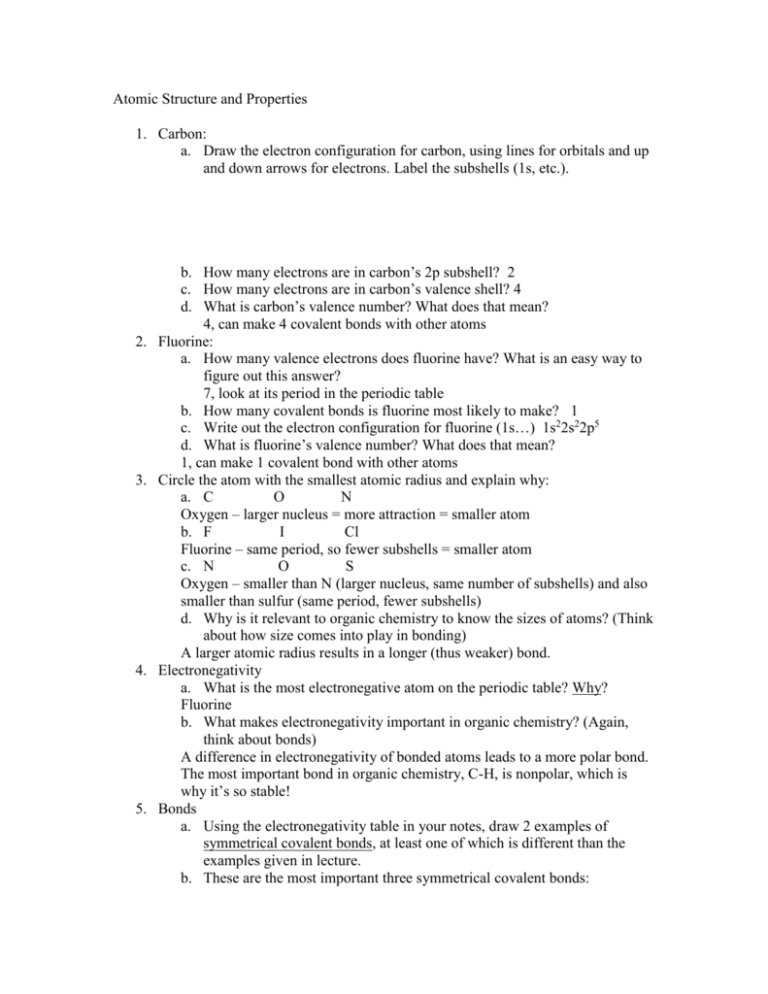Atomic Structure
advertisement

Atomic Structure and Properties 1. Carbon: a. Draw the electron configuration for carbon, using lines for orbitals and up and down arrows for electrons. Label the subshells (1s, etc.). 2. 3. 4. 5. b. How many electrons are in carbon’s 2p subshell? 2 c. How many electrons are in carbon’s valence shell? 4 d. What is carbon’s valence number? What does that mean? 4, can make 4 covalent bonds with other atoms Fluorine: a. How many valence electrons does fluorine have? What is an easy way to figure out this answer? 7, look at its period in the periodic table b. How many covalent bonds is fluorine most likely to make? 1 c. Write out the electron configuration for fluorine (1s…) 1s22s22p5 d. What is fluorine’s valence number? What does that mean? 1, can make 1 covalent bond with other atoms Circle the atom with the smallest atomic radius and explain why: a. C O N Oxygen – larger nucleus = more attraction = smaller atom b. F I Cl Fluorine – same period, so fewer subshells = smaller atom c. N O S Oxygen – smaller than N (larger nucleus, same number of subshells) and also smaller than sulfur (same period, fewer subshells) d. Why is it relevant to organic chemistry to know the sizes of atoms? (Think about how size comes into play in bonding) A larger atomic radius results in a longer (thus weaker) bond. Electronegativity a. What is the most electronegative atom on the periodic table? Why? Fluorine b. What makes electronegativity important in organic chemistry? (Again, think about bonds) A difference in electronegativity of bonded atoms leads to a more polar bond. The most important bond in organic chemistry, C-H, is nonpolar, which is why it’s so stable! Bonds a. Using the electronegativity table in your notes, draw 2 examples of symmetrical covalent bonds, at least one of which is different than the examples given in lecture. b. These are the most important three symmetrical covalent bonds: c. Using the electronegativity table in your notes, draw 2 examples of polar covalent bonds, at least one of which is different than the examples given in lecture. d. These are some important polar covalent bonds: 6. What in the world is formal charge?! a. Formal charge helps you to check if your structure is correct. Start with your intuition (molecules you’ve seen before, symmetry, etc.) and double check with formal charge. b. What is the rule of formal charge? Formal charge = [# of valence electrons] – [# of lone pairs] – [# of bonds] Want every atom in the molecule to have a formal charge of zero. c. Using formal charge, circle the following molecules that have the correct Lewis structures. If we have time, we will also look at problems 37, 38, & 41 in Chapter 1 of the textbook.










